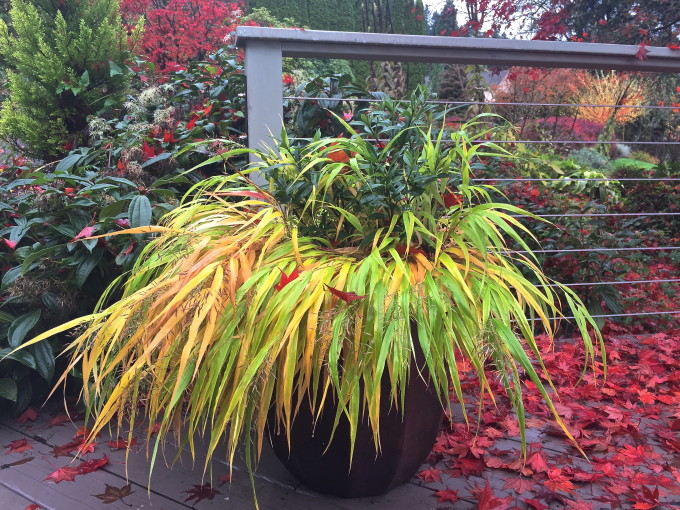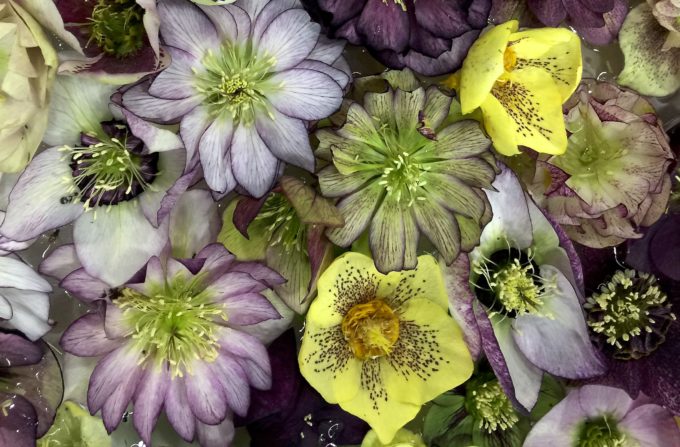
Spring is popping…time for a garden consult?
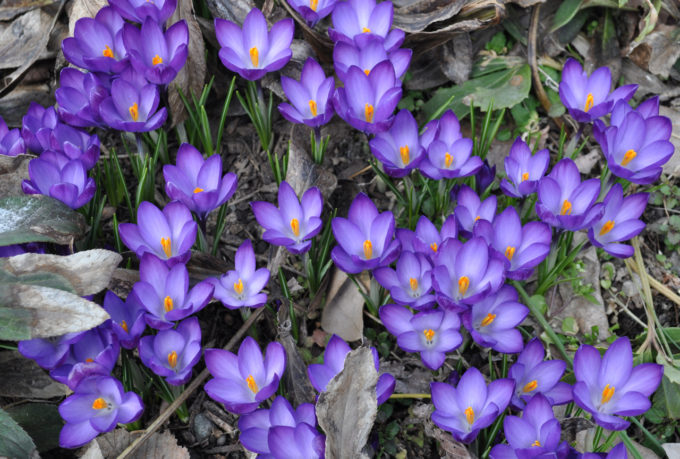
Crocus sieberi subsp. atticus ‘Firefly’
Design for Autumn Foliage
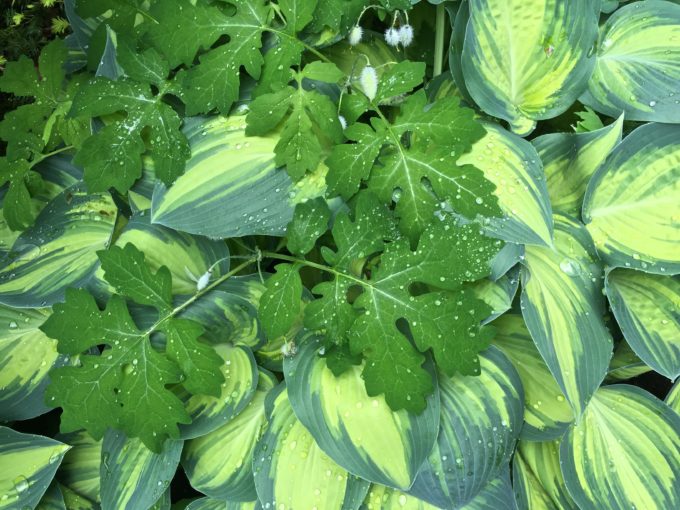
written for the Spring 2017 Quarterly of Hardy Plant Society of Oregon http://www.hardyplantsociety.org
There is nothing like the fresh emergent GREEN of springtime. Green is symbolic of new beginnings, vitality, and photosynthesis. We’re all chlorophyll addicts but tend to think of green as nature’s background color and often don’t regale its importance in garden design. Interestingly, Pantone (the arbiter of color in fashion and design) has chosen Greenery as its color of the year for 2017. As described, Greenery is a fresh and zesty yellow-green shade that evokes the first days of spring when plants revive, restore, and renew.
In April and May, gardens come alive with a vibrant parade of emerald-green lawns and vivid yellow-green mosses clinging to trees, rooftops, walls… even the driveway. One of my favorite springtime scenes is the contrasting color pattern across Forest Park hillsides behind our house as new yellow-green foliage of bigleaf maples (Acer macrophyllum) contrasts against swaths of evergreen Douglas firs, hemlocks, and cedars. I also delight in the patterned fresh leaves of our native wood sorrel (Oxalis oregana) and the annual unfurling of bright green western maidenhair fern fronds (Adiantum aleuticum). In my container plant business I often sheet moss containers with Irish moss (Sagina subulata) for quick-and-easy doses of dazzling spring green.
Conifers and broad-leafed evergreens that have been omnipresent background throughout winter take on new vibrancy as spring temperatures and soils warm. Douglas fir (Pseudotsuga menziesii), arborvitae (Thuja occidentalis), Japanese cedar (Cryptomeria japonica), rhododendron, Oregon grape (Mahonia aquifolium and hybrids), and cherry laurel (Prunus laurocerasus) intensify and lend customary, but renewed, green texture, structure, and form.
Green mixed with other colors gives us a range of hues – lime-green, olive-green, emerald-green, blue-green, and celadon often used to categorize plant colors. In my garden, we rely on Chamaecyparis pisifera ‘Boulevard’, Juniperus deppeana, Arctostphylos pajaroensis ‘Warren Roberts’, and Eucalyptus pauciflora var. debeuzevillei (ghost gum) to provide blue-green foliage accents. Sadly, our beautiful teenage ghost gum toppled in the heavy snow and ice of January and had to be removed. I often include Juniperus virginiana ‘Gray Owl’, Cupressus arizonica ‘Blue Ice’, Juniperus scopularum ‘Skyrocket’, and Ozothamnus rosmarinifolius for silvery gray-green color and textural contrast in my designs.
Bold lime- and yellow-green foliage brings a fresh, crisp vibe to the garden. Mexican orange cultivars (Choisya ternata ‘Sundance’ and ‘Gold Fingers’) can really heat up spring compositions. Choisya offers added value with fragrant white spring flowers evocative of the sweet, heady smell of blooming orange groves. Other deciduous shrubs like Ribes sanguineum ‘Brocklebankii’ and ‘Xera’s Lime Punch’, and Corylopsis spicata ‘Aurea’ (aka ‘Golden Spring’) offer limey and acid yellow-green hues, respectively, as miniature leaves unfurl, enlarge, and mature. Down closer to the ground, perennial bleeding heart (Dicentra spectabilis ‘Gold Heart’), Hosta ‘June’, and golden woodrush (Luzula sylvatica ‘Aurea’) offer similar spring color play.
Spring greens can be suffused and overlaid with red, burgundy, and bronze tones that fade out later in the growing season. New whorls of foliage on Mahonia and Pieris hybrids often sport this look. The leaves of Epimedium x rubrum are a mottled pattern of green and burgundy-merlot; and the fresh spring leaves of Rodgersia podophylla ‘Bronze Form’ offer a brazen metallic sheen.
Green is my favorite color, no doubt about it. While I am easily teased by a yellow spring rockrose (Halimiocistus) or Himalayan blue-poppy (Meconopsis), my mantra remains “foliage (in all its shades of green) rides the season; flowers are fleeting.”
20% End-of-Spring Pottery Sale, June 1-4
My Shop is overflowing with pots of all kinds. Dress up your garden, deck, or balcony for outdoor entertaining, barbecues, and summertime living.
SALE DATES: Thursday-Sunday, June 1-4; 10am-6pm
20% off everything in my garage showroom; discount not applied to special order items.
NOW IS THE TIME! Great prices on contemporary frost-proof pots and recirculating fountains. Styles include cast stone, glazed earthenware, and lightweight designs in fiber-cement, polyresin, and hypertufa.
518.929.0699
Email: bobhylandgardens@gmail.com
Jumpstart Summer…book a garden consultation now!
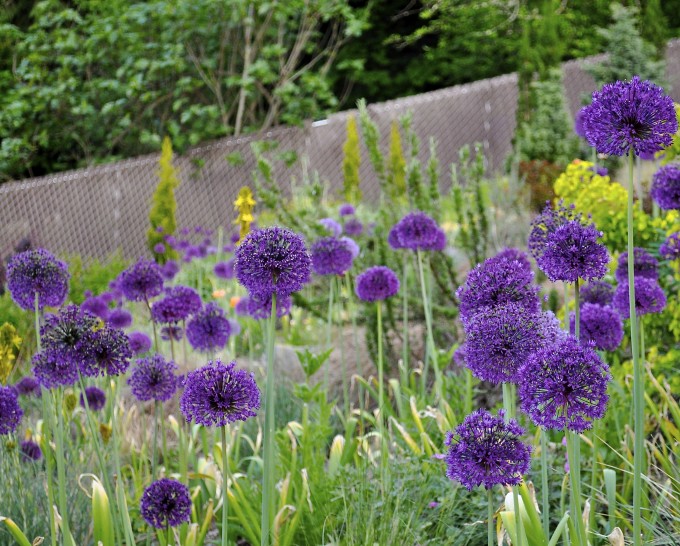
“Your garden should delight and excite you year-round. I design plant-driven gardens that offer bang for the buck through all seasons.”
After a tough winter, it’s time to plan for garden improvements or design new plantings.
My Shop is closed for regular retail until March 2nd…so I have greater availability to schedule garden consultations.
AT YOUR GARDEN OR BUSINESS
Introductory Consultation @$125… Includes site visit, planting recommendations, and preliminary plant list
Planting Design @$85/hour… Small spaces to large properties. Plant-driven, climate-adapted, easy-care gardens.
Container Design for Home and Business @$85/hour… Streetside, entryways, patios, balconies & terraces. I help you choose and purchase the best pots for your situation and design container plantings.
AT MY SHOP Contained Exuberance; 1114 SE Clay Street, Portland, OR 97214 (next to Xera Plants)
Pots, Fountains, Benches, Garden Ornament
Eclectic, contemporary, rustic & lightweight designs. Custom-ordering available.
518.929.0699 (voice/text)
Winter turns to Spring…Ribes sanguineum var. glutinosum
RED is commonly associated with heat, activity, passion, sexuality, anger, love and joy. It is the universal color for stop, pay attention…LOOK AT ME!
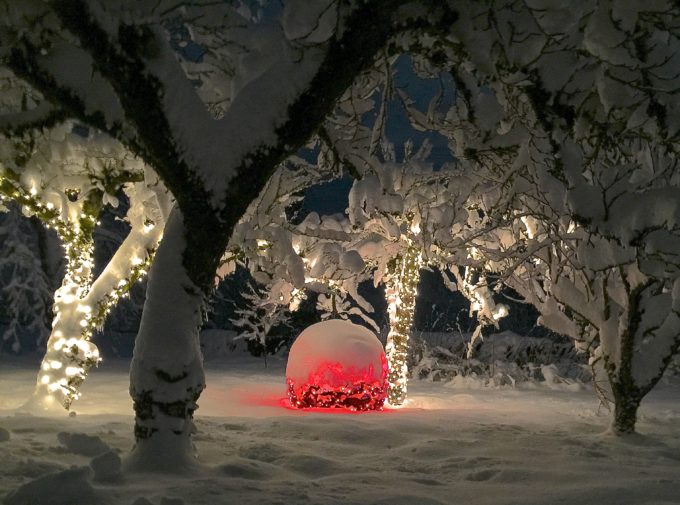
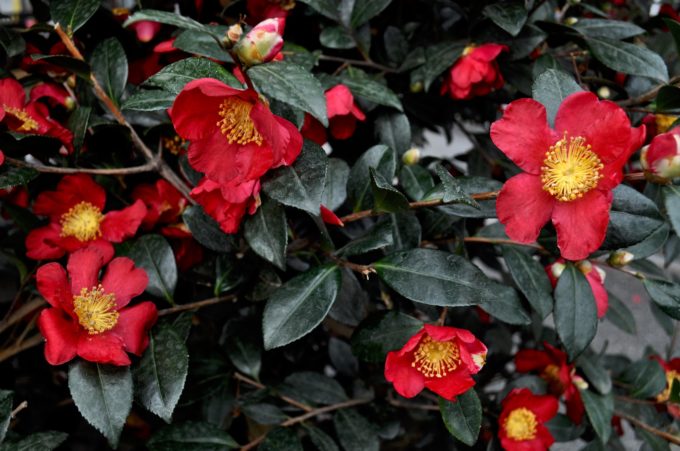
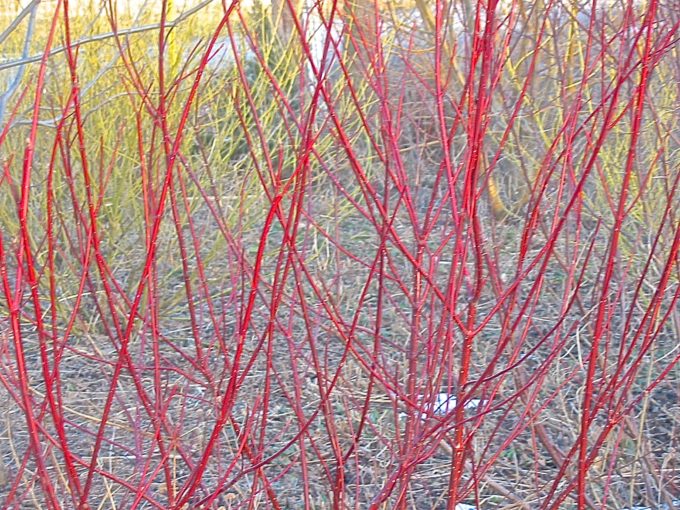
In planting design, red and its many hues can immediately focus attention on a particular element or view. With less color competition in the winter garden, chestnut bark, cardinal stems, garnet fruits, bronzy red foliage, and burgundy flowers really zing.
I am a big advocate of bold, red, coral, orange, and yellow winter stem color in my garden designs. I lived for a good chunk of time in the Mid-Atlantic and Northeast regions surrounded by a predominantly gray-brown, deciduous winter landscape for close to 5 months of the year. In Portland (thankfully!) winter is now a few months shorter, generally benign, and much more evergreen than back East.
A simplistic (but compelling!) winter planting that I left in the Hudson Valley consisted of copses of Betula nigra ‘Heritage’ (river birch) surrounded by thickets of Cornus sericea ‘Cardinal’, a vibrant red-twig dogwood with cardinal-red stems. I immediately understood the cultivar name after watching a male cardinal perched for hours on this dogwood’s twiggy silhouette in a snowy white landscape at our former nursery…it was the perfect color match between flora and fauna! Other spectacular winter red-twig dogwoods include Cornus sericea ‘Baileyii’ with bright red (carmine) winter stems (green foliage in season) and C. sericea ‘Hedgerow’s Gold’, with deep garnet branches covered in season with spectacular bright golden-yellow variegated foliage.
Acer palmatum ‘Sango Kaku (coral bark Japanese maple) is a small tree standout that tones up gardens in winter with its brilliant scarlet bark. After leaf drop, the bark and twigs take on a coral-red tinge that grows deeper as winter advances. Another is Acer rufinerve ‘Erythrocladum’ (in the snake bark maple group) that shines with winter bright coral-orangey red bark. And, of course, there is Acer griseum (paperbark maple) with its textured, peeling, papery sheets of chestnut bark that reveal cinnamon-brown underneath. In the same vein is Lagerstroemia indica x fauriei ‘Natchez’, which as it ages, shouts out in the winter landscape with a bark mosaic of cinnamon-brown.
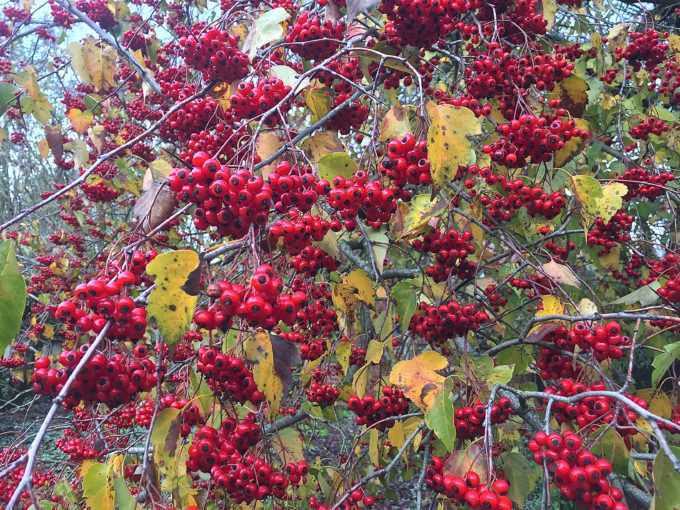
Winter fruits play heavily in my winter gardens. I favor trees and shrubs producing red fruits that don’t mush and ferment quickly in cold weather, persisting well into winter as a food source for resident birds (and a source of enjoyment for we humans). A good example is the crabapple, Malus x ‘Donald Wyman’, a small, but spreading tree that produces lots of bright red, persistent crabapples (to 3/8” diameter). A few other red-fruited crabapples with the same qualities are Malus sargentii and M. ‘Jewelberry’ (both better suited for small gardens) and M. ‘Sentinel’ a narrow, upright tree for tight spaces.
On Portland streets, Crataegus lavalleei (Lavalle hawthorn), Crataegus phaenopyrum (Washington hawthorn), and C. viridis ‘Winter King’ turn my head in December and January. All of these hawthorns produce abundant, showstopping clusters of red to orange-red fruits that ride well into winter. A bonus is their toughness and adaptability to our summer dry climate.
Evergreen English holly (Ilex aquifolium) produces the stereotypical holiday red berry in Pacific northwest gardens. While here to stay, natural resource managers and gardeners alike are concerned about this holly species spread in natural areas, parks, and national forests. In my own garden, I see the pervasive germination of seedlings from a female English holly that came with our northwest Portland house five years ago. But how I love this spiny evergreen laden with red, look-at-me fruit from November through March and the birds that slowly peck away at them.
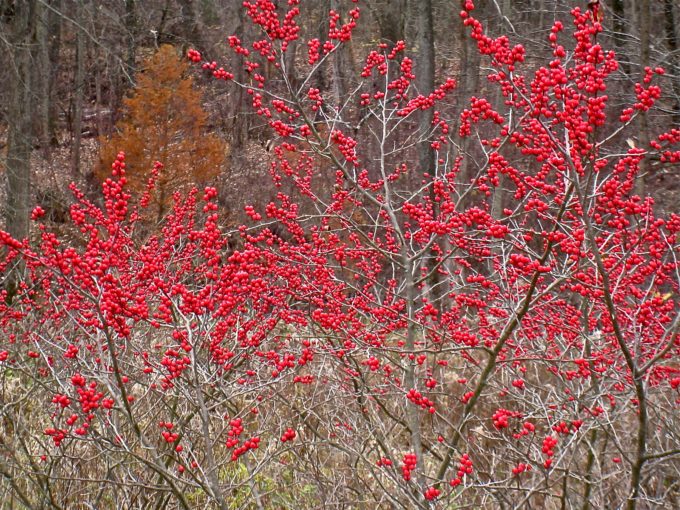
Truth be told, I much prefer deciduous hollies like Ilex verticillata ‘Winter Red’, ‘Red Sprite’, and ‘Sparkleberry’. Small white blooms mature into vivid red fruit after leaf drop in the fall. Deciduous hollies need a late-blooming male variety planted nearby in order to produce berries and they grow best in soils that retain moisture.
Viburnums are versatile, garden-worthy shrubs and consistently in my arsenal of winter red-fruits. In our garden Viburnum opulus ‘Exuberant’ displays bunches of red fruit around our front deck following the most glorious fall foliage display. Another favorite is Viburnum setigerum known as the tea viburnum because its leaves were used by Chinese monks to make a sweet medicinal tea. While I’m not steeping its leaves, I do delight in this viburnum’s fat clusters of bright red berries that often weigh down branches.
Let me not leave out another red knockout for winter gardens. Nandina domestica (heavenly bamboo) in its many forms provides lacy evergreen foliage turning brilliant shades of red in autumn, topped by clusters of red berries. My new favorite selection is Sienna Sunrise (‘Monfar’) with its intense fiery red new foliage and red highlights through winter.
Lower to the ground, I eagerly await hellebores that pull me from winter into spring. Among my favorites is Helleborus Winter Jewels ‘Cherry Blossom’ with its luscious large, semi-double blooms of rich pink with deep, cherry red centers. Towering above, dark red varieties of Camellia japonica, always remind of Alice in Wonderland and the Queen of Hearts. A sign of promise…just in time for Valentine’s Day!
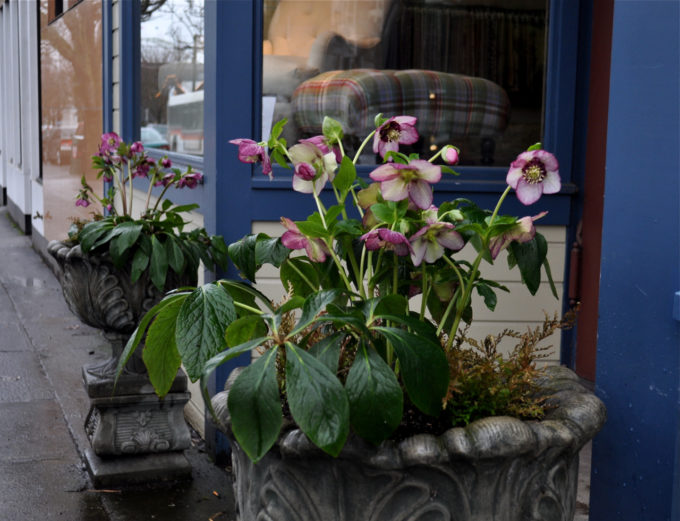
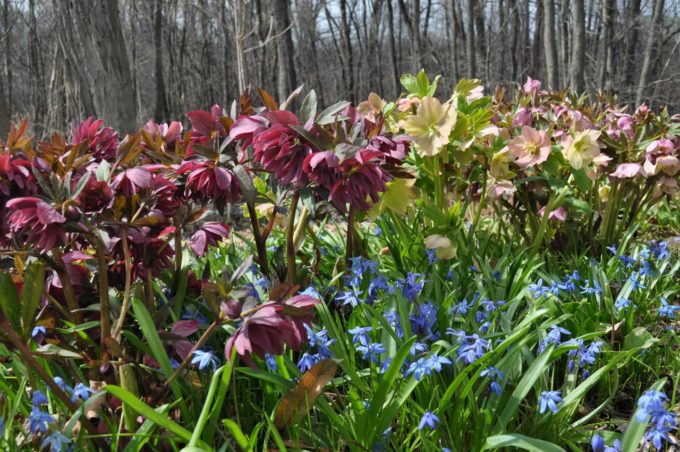
Orange Warms the Fall Garden
ORANGE epitomizes fall. Fields of ripe pumpkins ready for harvest; Japanese persimmons turning deeper orange as the weather cools; dahlias ruling the garden, like my new orange favorite ‘Maarn’ with four-inch, pure orange pompons. ORANGE is optimistic, uplifting, and rejuvenates our spirit, particularly after a long, dry northwest summer.
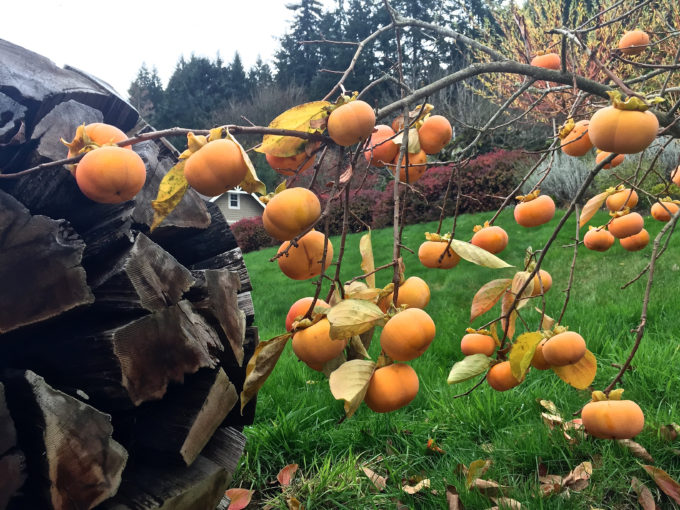
From a series of articles I’ve written on COLOR IN THE GARDEN for the Hardy Plant Society of Oregon Quarterly publication.
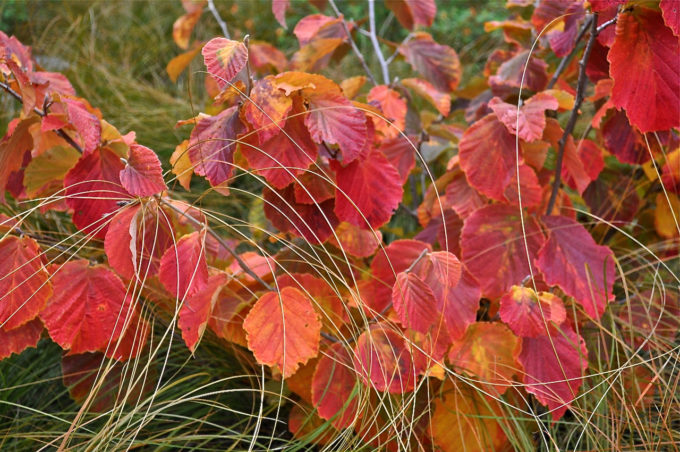
I didn’t realize how much I favor orange flowers in our own garden until I sat down to write this article. Early in the season, it starts with Papaver atlanticum (Atlantic poppy) in single and double ‘Flore Pleno’ flower form. This delightful poppy reseeds freely on our hilliside offering wave after wave of orange. The same goes for California poppy (Eschscholzia californica). Another favorite orange-hued perennial is Alstroemeria ‘Butterscotch’ gifted to to me by Lucy Hardiman (with more plants purchased at Joy Creek Nursery). Its butterscotch and apricot tones seem to complement many companion plants on our hillside. It offers continuous mellow, pastel color points well into fall.
I am a big fan of late summer and fall-blooming Agastache (misleadingly called anise-hyssop or licorice mint) in all shades of orange. Among my favorite selections are Agastache aurantiaca ‘Shades of Orange’, ‘Mandarin Dream’ (the color of Mandarin oranges), ‘Rainbow Sorbet’ (big, flared orange flowers that shift pink over several days giving a multi-color effect), and shorter compact selections like ‘Apricot Sprite’ (peachy apricot) and ‘Xera Flame’ (orange-red).
Another orange perennial that keeps trucking in our fall borders is Kniphofia thompsonii var. snowdenii. I favor spiky perennials that punctuate border designs and this poker is a showstopper. Rather than the regular congested arrangement of flowers this Kniphofia sports widely spaced multicolored tubular flowers in candy corn orange and hints of yellow. Each flower stem rises to 4’ tall; new spikes repeat through fall and continually surprise.
Flower color is obvious, but don’t overlook orange fruit. I adore Japanese persimmon (Disopyros kaki ‘Fuju’) for the beautiful shape of its deep orange fruits that persist after leaf drop into early winter. The specimen in Portland’s Lan Su Chinese Garden is to die for!
Other favorite orange-fruited shrubs are Viburnum setigerum (tea viburnum) with heavy dangling clusters of orange-red fruits (perhaps the best fruit display of any of the viburnums) and species Rosa rugosa with cherry-tomato-sized hips in arresting orange-red. R. rugosa cultivars ‘Alba’ (single white), ‘Hansa’ and ‘Therese Bugnet’ (double pinks) and ‘Blanc Double de Coubert (double white) all produce colorful hips in gardens that I have designed.
For fall foliage with plays of orange, Hamamelis x intermedia ‘Diane’ and Parrotia persica are hard to beat. Other standouts include Japanese maples, particularly selections like Acer palmatum ‘Orange Dream’ with its stunning orange new growth and yellow-orange fall color. Forever tucked in my mind is a beautiful dissected Acer palmatum ‘Waterfall’ which reliably shifts brilliant orange-red in the Japanese Hill-and-Pond Garden at Brooklyn Botanic Garden. That maple is now easily challenged by specimens in Portland’s acclaimed Japanese Garden.
Gardeners often forget that stem and bark color extend interest in the fall and winter. Euphorbia griffithii ‘Dixter’ glows with orange-red stems in our hillside borders during September and October. Cornus sanguinea ‘Winter Flame’ (and ‘Midwinter Fire’) offer brightly colored winter stems that flicker yellow, orange and red. Acer griseum (paperbark maple) is small tree standout for its exfoliating copper orange to cinnamon reddish/brown bark and showy orange to red fall color.
Since moving back to the West Coast five years ago, I have renewed my love affair with Zauschneria (now Epilobium) species and hybrids. My favorite upright forms (at least for now!) are Zauschneria ‘Bowman’ to 2 feet tall with vermillion-orange flowers and ‘Silver Select’ to 20 inches tall with silver foliage and bright orange flowers.
Remember to knit together plantings with Carex testacea (orange sedge…and don’t forget annuals and vegetables that spread an orange glow in the autumn garden. Among my favorites are Bulbine frutescens ‘Hallmark’, Calibrachoa Superbells ‘Dreamsicle’, Oxalis ‘Copper Glow’, tomato ‘Sungold’ (yum!) and a new favorite from Xera Plants, Antirrhinum ‘Double Azalea Apricot’
I let orange float into winter with a metal hanging dish planter filled with Hakonechloa macra ‘All Gold’. The grass eventually shifts to a tawny hay color as it goes winter dormant, but the dish color is an everpresent, cheerful ORANGE.
Pottery Sales by Appointment, November-February
My shop CONTAINED EXUBERANCE is closed for regular retail hours during winter.
BUT, you can still book garden consultations and buy garden pottery and decor by appointment.
CALL or TEXT: Bob Hyland at 518.929.0699
EMAIL: bobhylandgardens@gmail.com
FALL GARDEN CONSULTATIONS…book now!
Summer is my favorite time in the garden. Long, warm days to kick back and enjoy a bounty of flowers and foliage in a rainbow of color.
Blue is the #1 favorite color of all people. It is nature’s color for water and sky, embraced as the hue of heaven and authority, and worn universally in denim clothing. In my garden, Agapanthus ‘Joyful Blue’ is beginning to bloom…shooting up through a sea of Molinia caerulea ‘Variegata’.
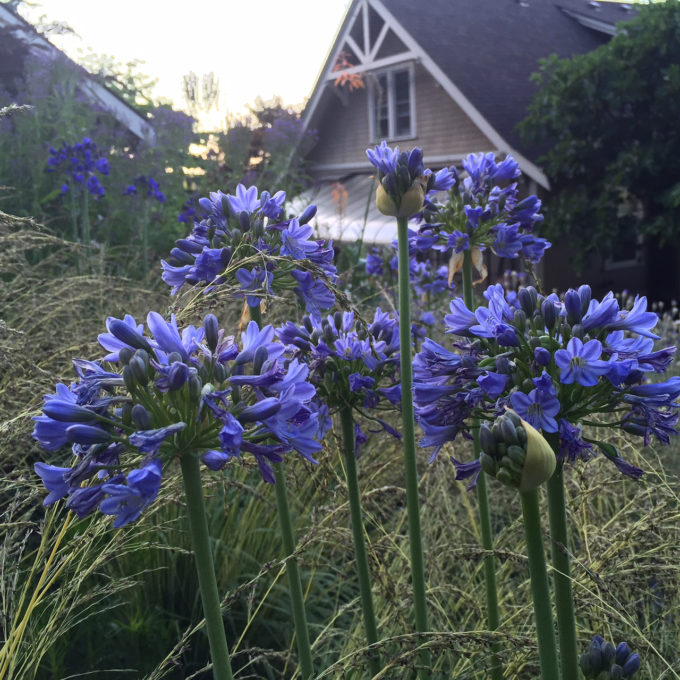
Gardeners have a fascination with “true” blue flowers in the garden. We are enticed by photos of Himalayan blue poppies (Meconospis spp.) and promises of an endless summer of blue mophead hydrangeas or a lacecap like Hydrangea serrata ‘Bluebird’.
In our warm, dry, intensely bright Pacific Northwest summers, blue flowers, fruits, and foliage offer calming relief. For backdrop in my own garden, we’ve planted a few leafy blue evergreen trees, notably Cunninghamia lanceolata ‘Glauca’ with its fat, wide frosty blue needles and Eucalyptus pauciflora subsp. debuzevillei, a large-leaved version of the snow gum with chalky blue leaves that contrast nicely with its earth-toned copper-pink-green-white patchwork bark.
For blue summer fruit, nothing beats edible blueberries, either lowbush (Vaccinium angustifolium) or highbush (Vaccinium corymbosum). I am still amazed at the mind-blowing blueberry selections available to HPSO gardeners in Portland regional nurseries. Aside from the juicy summer fruit, multi-stemmed blueberries offer deciduous leaves that turn bright yellow, orange, and vibrant shades of red in autumn.
Oregon-grape (Mahonia (synonym:Berberis) aquifolium) is our state flower – yellow spring blooms that yield clusters of round, dusky blue summer fruit. The tart, edible berries don’t offer the same sweetness of fresh-picked blueberries, but who cares! Mahonia is a dynamic shrub with 4-season interest, particularly hybrid varieties like M. x media ‘Arthur Menzies’, ‘Charity’, ‘Lionel Fortescue’ and ‘Winter Sun’. No garden should be without one…or two!
Another favorite blue-fruiting shrub in our garden is Berberis darwinii. Remarkable clusters of intense blue fruit ripen in summer…and freshen up fading hellebore flowers.
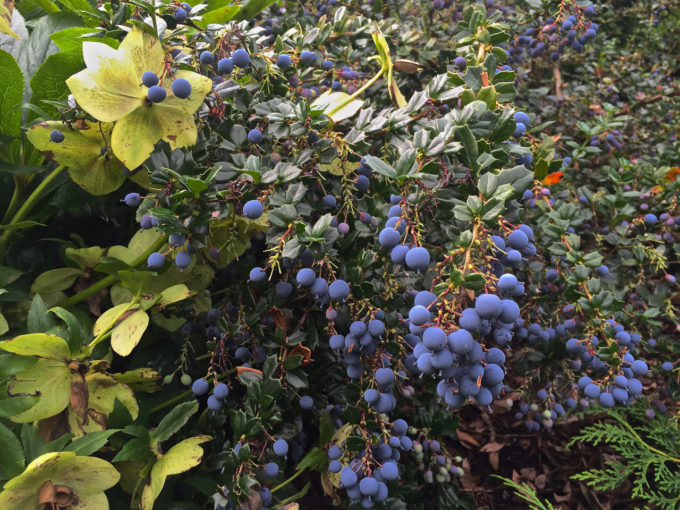
I delight in all forms of California lilac (Ceanothus) and their adaptability to our dry summers. Perhaps my new favorite is Ceanothus x ‘Topaz’, a great summer-bloomer with some of the darkest, deep blue-black flowers in the genus. Flower trusses on ‘Topaz’ are loose and airy, lending informality in the summer garden.
Among blue-flowering perennials, several really sing in summer. Penstemon heterophyllus ‘Electric Blue’ leads the parade. Its zappy true blue flowers smother the foliage for up to six weeks in late spring and then sporadically through summer with some deadheading.
Lithodora diffusa ‘Grace Ward’ may seem a rather common box store perennial, but its flowers are among the most intense deep blue. It is a wonderful groundcover or rock garden accent with sprawling to slightly mounded form.
On our northwest Portland hillside, two blue-flowered perennials dominate the summer scene. Catananche caerulea (Cupid’s dart) grows in clumps of narrow gray-green foliage with wiry flower stems of cornflower blue to violet-lavender fringed daisies. Catananche is a dynamic bedfellow with Molinia caerulea ‘Variegata’ on one of our terraces.
My other newly favored perennial is Agapanthus with strappy green foliage down on the ground and aerial globes of powder blue, royal, and blue-black that drift across our summer plantings. Standouts are Agapanthus ‘Joyful Blue’ with soft blue flower heads fading to a milky lavender (a Joy Creek Nursery selection) and A. ‘Blue Leap’, a vigorous, hardy variety chosen for its ability to “leap” across our hillside. We purchased ‘Blue Leap’ from Dan Hinkley at Windcliff Plants. Dan originally selected and introduced ‘Blue Leap’ through Heronswood Nursery.
I use grasses and sedges liberally in my garden designs to knit plantings together at the ground plane. Many are blue-bladed like little bluestem (Schizachryrium scoparium ‘The Blues’), blue oat grass (Helictotrichon sempervirens ‘Sapphire’), blue fescue (Festuca ovina ‘Elijah Blue’) and blue sedge (Carex flacca ‘Blue Zinger’). I’m discovering the merits and best use of native Festuca californica and the South American blue wheat grass (Agropyron magellanica) which froms a striking evergreen clump of intense blue foliage. A couple of blue-foliaged perennials like Euphorbia rigida, Parahebe perfoliata (Digger’s speedwell), and Agastache ‘Blue Boa’ work wonderfully spiking up through some of these blue grasses and sedges. Blue foliage, flowers, and fruits offer cool summer moments, and at the same time make your garden ZING.
Hot Pots for the Cool Season
Saturday, September 24th at 11:00 am
1114 SE Clay Street, Portland, OR 97214
Paul Bonine, co-owner of Xera Plants.
Invigorate your containers with plantings for maximum fall and winter enjoyment.
